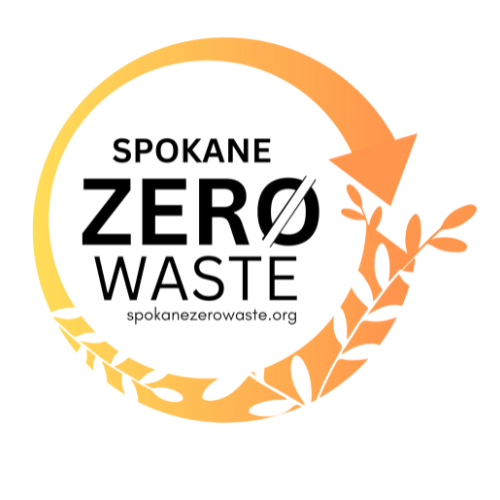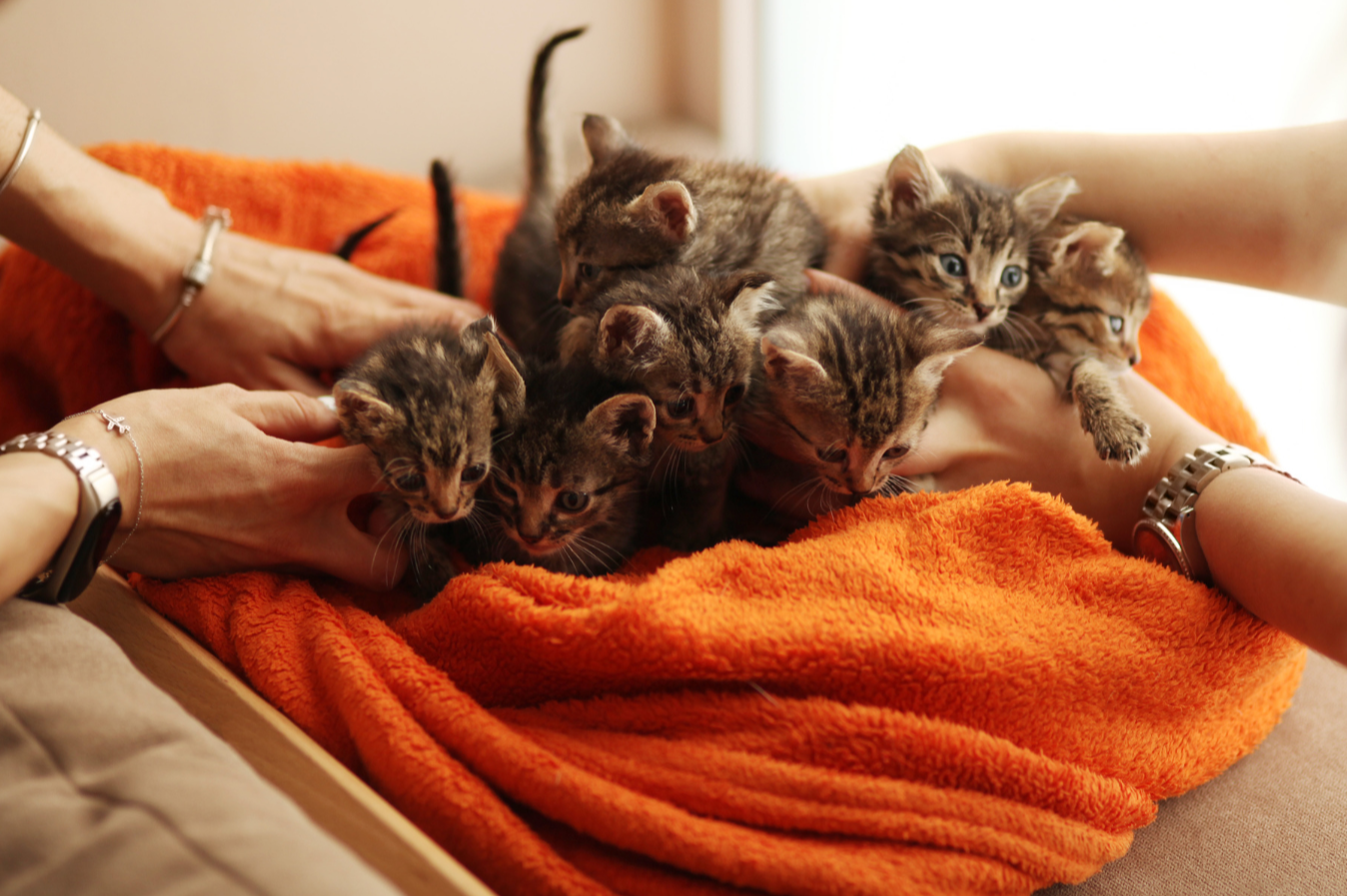The 2nd “R” of sustainable living: Reuse
In last months newsletter, we discussed the “R” of recycling, its limitations and the fact that our waste issues continue to grow despite a continual industry push that recycling is the answer.
What Spokane Zero Waste and others in the waste space know to be true is that mirroring nature, by developing a circular economy, is a better, more sustainable way to preserve resources and reduce waste.
A circular economy reuses already extracted resources in the manufacturing cycle rather than creating waste. This means designing for reuse from the beginning. This could be using screws rather than nails in lumber building so as to render the lumber reusable (a screw is easily backed out while removing nails is extremely laborious) or designing food packaging from a single material that can be recycled or composted, not layered materials that can’t be separated, like aseptic packaging.
This month we’ll dig into the “R” of Reuse, and give you ideas and resources to keep usable items in circulation which saves energy and other resources that go into making new items, even if it’s made with recycled materials.
Reuse aligns with SZW’s mission of shifting the values of culture and commerce. Placing high value on already extracted resources and respecting where they came from means finding ways to keep those materials in circulation as long as possible. Here are some ideas on how to get started.
Donate used towels and blankets to animal shelters or veterinary clinics.
Reuse plastic pots for seedlings or to grow fast-growing vegetables such as zucchini or potatoes. The Friends of Manito will take pots back for reuse.
If you forget your reusable shopping bag (who hasn’t?), reuse the bag you get for trash or pet waste.
Reuse glass jars for storing bulk food. Items such as nuts,dried fruit, grains and granola will last a long time in a sealed jar. Bonus tip - bring your empty jars to the store for refill, be sure to have them weighed before refilling. Get a reusable water bottle and coffee cup and remember to use them Tip: rather than jumping on the expensive Stanley trend, purchase these from a thrift store - they are full of them.
Shop second hand. Local thrift stores and consignment shops are full of items that still have a lot of life left in them.
Bungalow candles (sold at the Plant Project) will take back their jars for reuse.
The Plant Project, located in the same building as the Refillery will take back plastic bags for their hand mixed soil.
See if your broken item can be repaired before throwing it away. The Northwest has some specialty repair shops for things like hiking boots.
Visit the Repair Cafe for small appliances, toys, furniture and other household items or Mend-It Cafe for all your textile repairs.
Reuse Spotlight
Members of Art Salvage
From left to right: Katie Patterson Larson, Amy Mickleson, Chad Shayotovich, Alyana Biersdorff
Spokane is home to some industrious and creative people who have turned reusing into a hobby and resource for the community. One such person is Katie Patterson Larsen, founder of Art Salvage.
SZW: Tell us a little about Art Salvage and its mission
Katie: Art Salvage is a nonprofit Creative Reuse Center that supports the circular economy in the Inland Northwest by diverting usable materials from the waste stream and getting materials into the hands of makers. Our main program is to accept donations of usable art and craft supplies and then sort, organize and prepare the materials so that
From left to right: Katie Patterson Larson, Amy Mickleson, Chad Shayotovich, Alyana Biersdorff
they can be distributed to makers. We have a retail shop that sells the donated materials at affordable prices, and we also donate materials to other nonprofits and organizations through our Mini Grant program.
SZW: What inspired you to form Art Salvage?
Katie: There are creative reuse centers all over the world and I knew that if I was interested in one as a maker that there would be others that felt the same in our community. I just didn't know how well it would be received until we launched a website and people were ready to donate materials right away. In addition, I saw a need for more access to art and creativity for folks on a small budget and I wanted to see more art making opportunities that were free or low cost in Spokane.
SZW: What have been some of your favorite art projects you've seen come from upcycled items?
Katie: That's a hard question, there are so many amazing projects! My favorites are always when a material has been transformed and the viewer might not even identify the reused materials initially.
SZW: What do you see as the most pressing environmental issue for our community?
Katie: I don't know if this is the most pressing issue, but my work really highlights that people want to do the right thing and not just throw everything away but that they don't know how. There is a lot of confusion about how to recycle or where to donate items and people get overwhelmed and throw away items that are still usable. This is also very closely tied with the repair economy which has been gaining more attention in Spokane. There is still a lot of opportunity to educate the community and make reuse and repair services more accessible.
SZW: Art Salvage recently moved to a new, larger location. What is your vision for the future of Art Salvage?
Katie: Our main goal for the new bigger location is to be able to accept more donations. In 2020 we started accepting donations by appointment only, and often people were waiting months before they could come in to donate. With more space for intake and more floor space for display, we hope to be able to make donating easier for folks as well as getting a wider range of materials out for makers to choose from. The other benefit of the new building is a dedicated classroom space so that we can host more classes and workshops. Art Salvage aims to not only get materials to people but to educate and inspire folks about reuse and upcycling.
Art Salvage is located at 610 E North Foothills Dr. Spokane and at artsalvagespokane.com
MY JOURNEY TO REUSE by Shenandoah Marr
Shenandoah Marr is a SZW Board Member, Conservationist and Writer.
Having been an environmentalist since childhood, my cabinets in college were lined with used glass jars and plastic containers full of dry goods purchased from my local co-ops bulk bins. I hosted many dinners and potlucks during this time and would fashion leftover containers out of yogurt cups or similar items. I dutifully carried my canvas shopping bags and Nalgene water bottle.
Surely I was reusing everything I could right? No. Lacking any artistic talent or repair skills I’ve had to think outside the box to repurpose or reuse things. Here are a couple of minor adjustments I’ve made that save both resources and money. Do I still have room to improve? Absolutely! But every little bit helps cut waste and, most importantly, adjusts our mindset.
I hate shopping for clothes and have to really psyche myself up to go do it. With most of my jeans either being too (ahem) small or too worn out to wear in public I recently decided to hit up Goodwill for some new ones. After trying on many pairs that did not fit, I walked out with three pairs that do (total cost $26)....including a pair of Guess brand jeans. As a pre-teen in the mid 1980’s there was nothing more coveted than a pair of Guess jeans. They were considered very chic and had a price tag to match. My inner 12- year-old felt I’d won the lottery when I paid ten (2024) dollars for a pair of jeans that cost $60 in 1987
The much touted Guess Jeans
Canning jars - if you are a recipient of one of my canned food items it’s a huge compliment to have the empty jar returned. That tells me you ate the contents and hopefully enjoyed it. It’s also a good way to get a (full) jar returned to you!
Next month we’ll do a deep dive into the most effective ways to minimize waste of all….refusing and reducing!
ACTIVIST TIP: Inspire others; lead by example. Nobody wants to be told what they’re doing is bad or wrong. Instead, focus on yourself and your choices and talk about what you’ve gained (rather than lost) by making these sustainable changes. It could be saving money, improving your health, or alleviating some anxiety about the state of the environment. Being authentic and building relationships has impact.
“There is no such thing as ‘away’. When we throw anything away, it must go somewhere.” – Annie Leonard (creator of “the Story of Stuff”)





